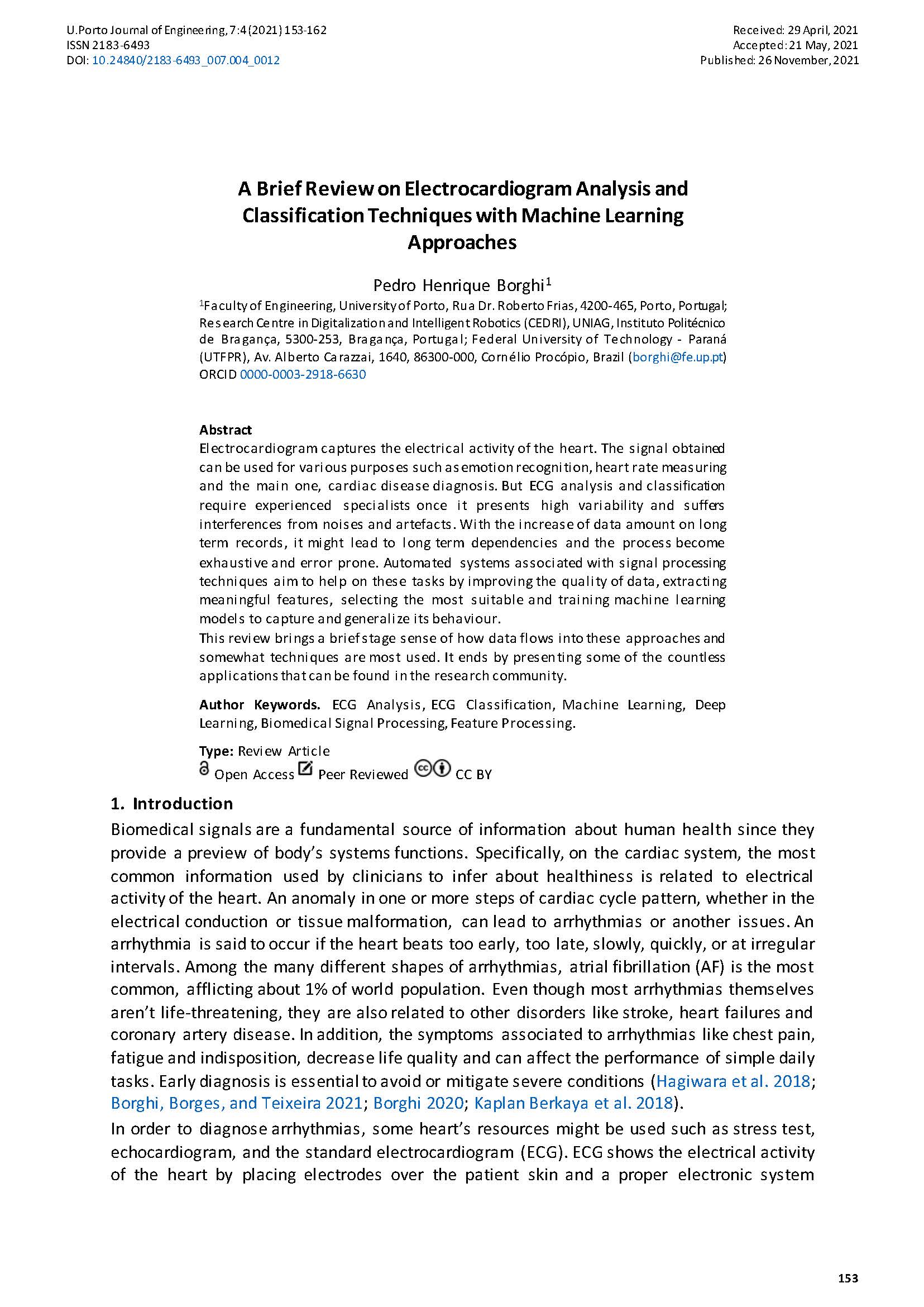A Brief Review on Electrocardiogram Analysis and Classification Techniques with Machine Learning Approaches
Main Article Content
Abstract
Electrocardiogram captures the electrical activity of the heart. The signal obtained can be used for various purposes such as emotion recognition, heart rate measuring and the main one, cardiac disease diagnosis. But ECG analysis and classification require experienced specialists once it presents high variability and suffers interferences from noises and artefacts. With the increase of data amount on long term records, it might lead to long term dependencies and the process become exhaustive and error prone. Automated systems associated with signal processing techniques aim to help on these tasks by improving the quality of data, extracting meaningful features, selecting the most suitable and training machine learning models to capture and generalize its behaviour.
This review brings a brief stage sense of how data flows into these approaches and somewhat techniques are most used. It ends by presenting some of the countless applications that can be found in the research community.
Downloads
Article Details

This work is licensed under a Creative Commons Attribution 4.0 International License.
Authors who publish with this journal agree to the following terms:
- Authors retain copyright and grant the journal right of first publication with the work simultaneously licensed under a Creative Commons Attribution License that allows others to share the work with an acknowledgement of the work's authorship and initial publication in this journal.
- Authors grant the journal the rights to provide the article in all forms and media so the article can be used on the latest technology even after publication and ensure its long-term preservation.
- Authors are able to enter into separate, additional contractual arrangements for the non-exclusive distribution of the journal's published version of the work (e.g., post it to an institutional repository or publish it in a book), with an acknowledgement of its initial publication in this journal.
- Authors are permitted and encouraged to post their work online (e.g., in institutional repositories or on their website) prior to and during the submission process, as it can lead to productive exchanges, as well as earlier and greater citation of published work (See The Effect of Open Access).

